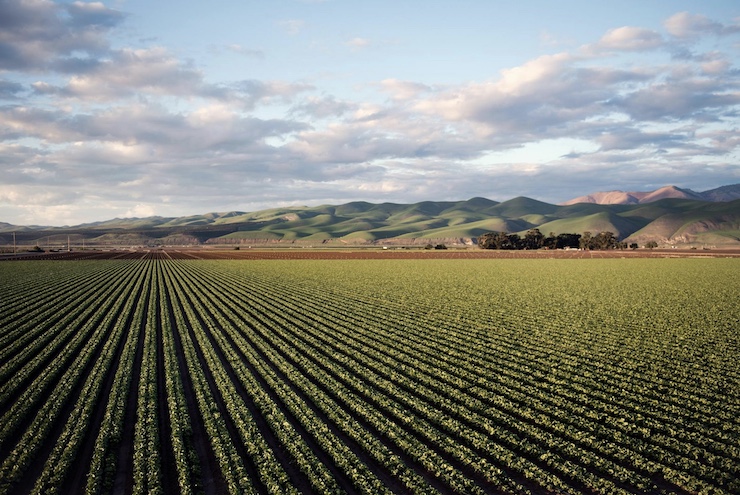
There are approximately 8.1 billion people on Earth. As of the 2023 United Nations State of Food Security and Nutrition in the World report, 735 million people struggle with food scarcity. Global climate change is the leading driver of food scarcity worldwide, disrupting agriculture through extreme weather, shifting growing seasons, and degrading essential resources like soil and water.
Its widespread impact makes it the most urgent and escalating threat to global food security. Droughts pose a greater threat to global food availability than excess rainfall, affecting more regions with long-term reductions in crop yields and water supplies. While heavy rains can cause local damage, droughts have a broader and more sustained impact on agricultural systems worldwide.
Severe droughts throughout regions of Africa are causing threatening levels of food loss, particularly affecting wheat crops. A team of researchers from the Hebrew University of Jerusalem, Israel (HUJI), has partnered with the Volcani Institute to conduct a drone-based study to tackle this issue. Located in Rishon LeZion and officially known as the Agricultural Research Organization (ARO), the Volcani Institute is Israel’s national agricultural research center. The team was led by Ph.D. candidate at HUJI’s Robert H. Smith Institute of Plant Sciences and Genetics in Agriculture, Dr. Roy Sadeh.
Their research was recently published in a paper titled UAV-borne hyperspectral and thermal imagery integration empowers genetic dissection of wheat stomatal conductance. The paper’s abstract states, “This study aimed to assess the potential of UAV-borne thermal and hyperspectral imaging for estimating key wheat traits and identifying their genetic architecture.” In particular, the team wanted to study how certain breeds of wheat are better resistant to drought by examining stomatal levels. Stomatal levels refer to the measurement of stomata, tiny pores on plant leaves that regulate gas exchange and water loss, playing a crucial role in a plant’s ability to manage drought and environmental stress.
Traditionally, stomatal measurements are taken using handheld devices that clamp onto leaves to assess how much water vapor passes through the stomata. This process is labor-intensive, time-consuming, and limits the number of plants that can be tested in the field. “Until now, measuring stomatal conductance, the plant’s ability to regulate water, was slow and required manual tools,” Dr. Sadeh explains. “This drone-based approach offers a fast and powerful new way to identify drought-tolerant plants without touching the plants.”
The research team deployed specialized drones, the DJI Matrice Pro 600, equipped with advanced hyperspectral and thermal imaging sensors to monitor wheat fields remotely. These drones flew over large agricultural plots, capturing detailed data on plant health, water usage, and stomatal conductance without the need for physical contact. By analyzing the light spectra reflected from the crops, the sensors could detect subtle changes in how plants regulate water loss and respond to drought stress.
The drones used were lightweight, highly maneuverable, and capable of covering extensive areas quickly, making it possible to assess thousands of plants in a fraction of the time traditional methods require. This innovative approach allowed the team to efficiently identify drought-tolerant wheat varieties by combining precise imaging data with genetic analysis, accelerating breeding programs aimed at developing crops better suited to changing climate conditions.
According to predictions made by the United Nations, the global population could increase to 9.6 billion people within the next 15 years, requiring food production to increase by 60%. To ensure food security, studies like Dr. Sadeh’s are vital. In the paper, Dr. Sadeh reports that his team’s research helped them achieve a 28% improvement in estimating crop water use as well as gathering complete genetic markers for the crop.
As the first-ever stomatal conductance measurement study to be completed using drone technology, Dr. Sadeh’s process marks just the beginning of what is possible. “Implementing this integrated approach,” Dr. Sadeh states in the paper, “could promote the development of new climate-resilience wheat varieties to ensure food security worldwide by screening for stomatal conductance, which is not practical with manual measurements.”
This groundbreaking use of drone technology represents a significant leap forward in agricultural science, offering a scalable and efficient way to combat the growing challenges of climate change and food scarcity. By accelerating the identification of drought-resistant crops, this approach not only promises to improve global food security but also helps farmers adapt to an increasingly unpredictable environment. As research like Dr. Sadeh’s continues to evolve, the future of sustainable farming looks more resilient and innovative than ever.
|